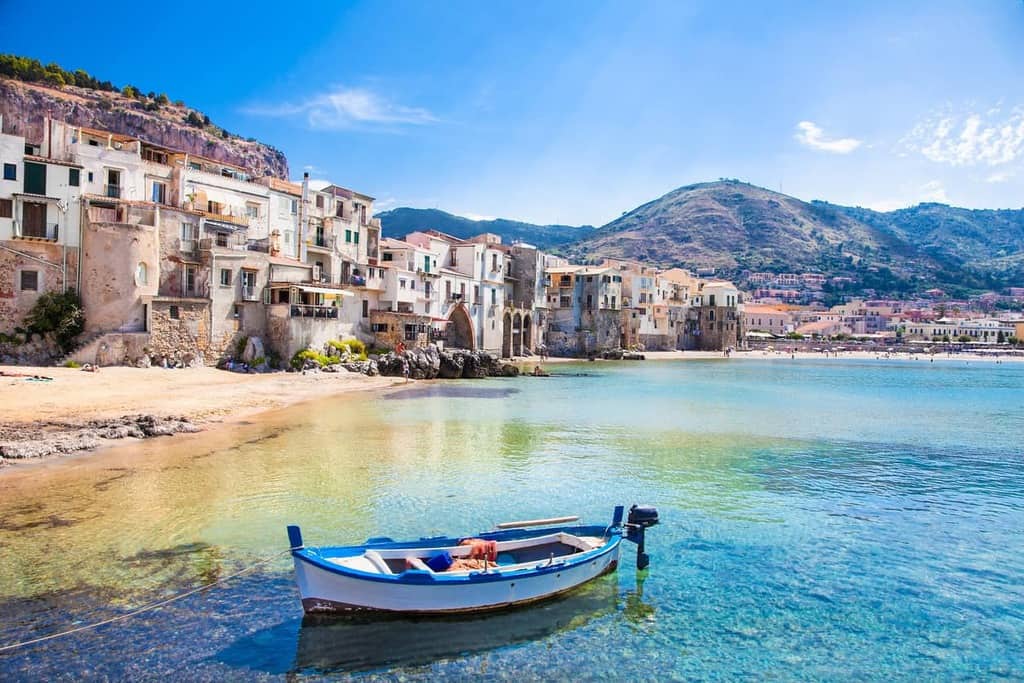You’ve probably heard of Sicily; it’s not really a secret island. But somehow, the largest island in the Mediterranean has managed to retain its status as a hidden paradise. Seemingly overlooked in favor of more popular Italian spots like Rome or the Amalfi coast, Sicily is all but forgotten when most Americans plan their Italian getaways. But this Italian utopia has it all — except for the excessive tourism that some might argue is ruining other Italian cities like Venice or Florence.
Sicily marches to the beat of its own drum, a different land with different rules, making it a very special destination to visit. If you aren’t convinced yet, here are some of the reasons you need to eat, drink and tour your way through the magical island of Sicily.
RECOMMENDED: The Best Sicily Wine Tours: From Etna, to Catania & Taormina
Top Reasons to Visit Sicily This Year
- Top Reasons to Visit Sicily This Year
- Frequently Asked Questions about Reasons to Visit Sicily
- Recent Articles about Sicily, Travel Guides & Tours
- Ultimate Sicily Itinerary for Wine & Food Enthusiasts
- Best Sicily Wine Tours: From Etna, to Catania and Taormina
- What are the top reasons to visit Sicily this year?
- What are the must-visit destinations in Sicily?
- How long should I plan to visit Sicily for?
- What is the best time to visit Sicily?
- What are the must-try Sicilian foods and drinks?
A Vast History
Human activity on the island of Sicily dates back to 12,000 BC. Over the years, the island’s rulers include Romans, Greeks, Phoneticians, Germanic Goths, Arabs, Spanish and of course — the Italians. With seven UNESCO World Heritage sites and over 25 castles scattered around the island, the rich historical makeup of its past can be felt everywhere you explore.
RELATED: Luxury Hotels To Stay at in Sicily
Mount Etna (and its Vino)
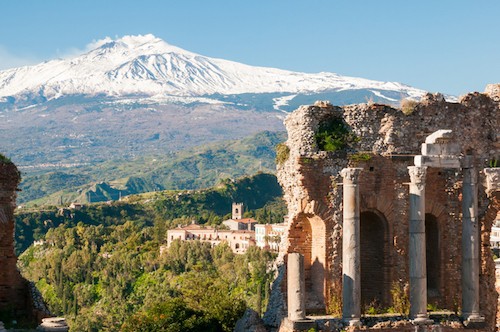
The island’s claim to fame is Mount Etna, which is the tallest active volcano in Europe. At almost 11,000 feet, the volcano towers high above the island, and often spews black ash around to stir things up. You can visit the attraction by hiking, a jeep tour, skiing, quads, biking and even do a wine tour. Yup, you heard right– volcanic ash and soil actually make for excellent wine cultivation. The Etna region even has its own Italian DOC.
RELATED: Charming Italian Towns To Visit If You’re a Food and Wine Lover
Ice Cream for Breakfast
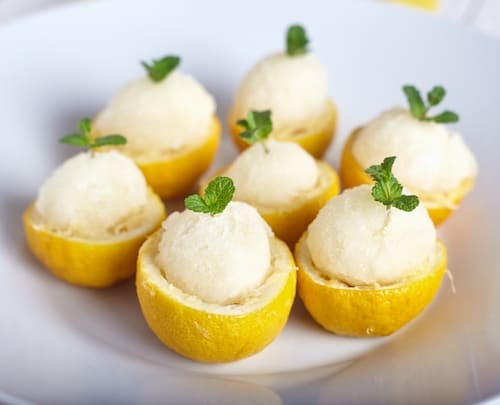
It’s true — Sicilians forgo cappuccinos for breakfast and instead indulge in a specialty called granita. The sweet treat is made of frozen water, sugar and other flavors. Some of the most popular kinds have almond, lemon and strawberries as their main ingredients, all delicacies that grow locally throughout the island. You may as well go all out and order even more Sicilian desserts for breakfast, like a cannoli, which are fried dough tubes filled with creamy ricotta paste topped with pistachios or cassata, a ricotta cake with candied fruits.
Wine Heaven
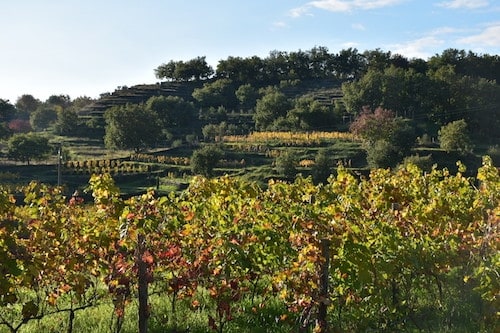
Besides the aforementioned volcanic Etna wines, Sicily has a number of different wine regions. Fan favorites typically include the famous Nero d’Avola, a strong wine with special fermentation techniques. Then there are stronger, dessert wines like Malvasia and the fortified Marsala, which is similar to Port. Of course, washing your meal down with a few sips of Grappa never hurt anybody!
RELATED: A Wine Lover’s Itinerary for Visiting Sicily
Additional Wine Regions near Sicily Worth Exploring
Campania
Located on the mainland’s southwestern coast, Campania boasts ancient winemaking traditions and unique grape varieties. The region is particularly known for its white wines made from Fiano, Greco, and Falanghina grapes, as well as reds from Aglianico.
Calabria
Just across the Strait of Messina from Sicily, Calabria is home to several indigenous grape varieties. The region is famous for its Ciro wines, made primarily from the Gaglioppo grape, which produces complex red wines with a fruity character.
Basilicata
This southern Italian region is famous for its Aglianico del Vulture wines. These reds, produced from the Aglianico grape, are known for their full-bodied, tannic profile and aging potential.
Puglia
The heel of Italy’s boot, Puglia, is a significant wine producer, boasting a warm Mediterranean climate. The region is best known for its bold red wines made from Primitivo and Negroamaro grapes, as well as refreshing white wines from Verdeca and Bombino Bianco.
Sardinia
This island to the west of Sicily has a long history of winemaking. Sardinia is renowned for its Cannonau wines (a local name for Grenache) that are rich, full-bodied reds. The island also offers aromatic white wines made from Vermentino grapes.
Lazio
Located near Rome, Lazio is known for its white wines, particularly those made from the Malvasia and Trebbiano grape varieties. Frascati and Est! Est!! Est!!! di Montefiascone are popular examples of the region’s refreshing, crisp white wines.
Abruzzo
Situated on the Adriatic coast, Abruzzo is famous for its Montepulciano d’Abruzzo wines. These reds, made from the Montepulciano grape, are known for their rich, fruity flavors and soft tannins, while the region’s white wines, like Trebbiano d’Abruzzo, offer a bright, zesty character.
The Baroque Towns
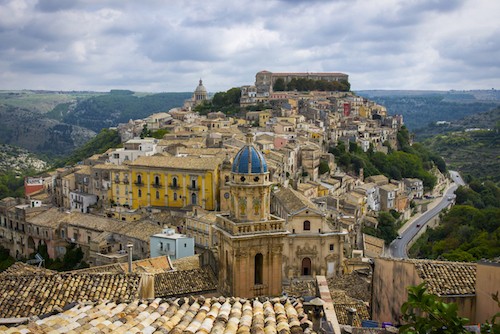
One of Sicily’s greatest appeals are the stunning Baroque hilltop towns, like Caltagirone, Modica, Noto, Ragusa and Scicli, among others. These towns are magnificent, historical spots, with homes and buildings carefully constructed into the hillsides. Each of the towns has an extensive amount of Baroque architecture and art. It’s best to rent a car, set a base in a spot such as Noto and explore a few villages each day. Be ready to climb!
If these towns aren’t enough for your visit to Sicily, also be sure to drive through Palazzolo Acreide, Militello Val di Catania, and Catania. These captivating Baroque towns each offer their own unique charm and architectural wonders.
Palazzolo Acreide, a UNESCO World Heritage Site, boasts a rich history dating back to ancient Greek times. The town’s striking Baroque buildings, such as the Church of San Sebastiano and the Basilica of San Paolo, are a testament to its architectural prowess. Don’t miss the opportunity to explore the ancient ruins of the Greek Akrai theater, providing a glimpse into the town’s storied past.
Militello Val di Catania is another remarkable Baroque town that’s sure to leave a lasting impression. Admire the stunning facades of the Church of San Benedetto and the Church of Santa Maria La Vetere as you meander through the town’s winding streets. The local museums, such as the Museo Civico and the Museum of Sacred Art, provide fascinating insights into the region’s history and culture.
Lastly, Catania, the second-largest city in Sicily, offers an urban Baroque experience with its elegant squares, ornate churches, and lively markets. The city’s centerpiece, Piazza Duomo, is home to the impressive Cathedral of Saint Agatha and the famous Fontana dell’Elefante, a symbol of Catania. Take a stroll along Via Etnea, the city’s main thoroughfare, lined with palaces, churches, and shops, all while enjoying the dramatic backdrop of Mount Etna.
RELATED: The Best Things to Do in Milan Italy This Year
Blissful Beaches
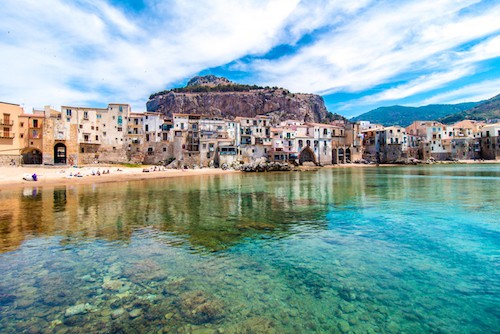
Sicily is an island, which means plenty of sandy shoreline and clear waters. One of the most popular beaches is Cefalù, a charming little town backed by towering cliffs. Isola Bella, ‘the Pearl of the Ionian Sea’ is an easy day trip from Taormina by boat. Or, swim in the clear waters of Lampusa, one of the Pelagie Islands that’s closer to Africa than Italy. Even the rocky beaches are special in Sicily, like the Scala dei Turchi. This beach’s white rocks formed by the tides resemble a smooth staircase coming out of the water.
Sicily’s extensive coastline offers even more enchanting beach destinations for Winetravelers to explore. Mondello Beach, nestled between Monte Pellegrino and Monte Gallo, boasts turquoise waters and soft, golden sands. Its lively atmosphere and wide array of seaside cafes make it an excellent choice for a day of relaxation and enjoyment.
The pristine nature reserve of Vendicari offers a more tranquil experience. Its secluded, unspoiled beaches such as Calamosche and Eloro are ideal for those seeking a serene escape. The reserve is also home to a variety of migratory birds, making it an excellent spot for birdwatching enthusiasts.
San Vito Lo Capo, known for its powdery white sands and crystal-clear waters, is reminiscent of a Caribbean paradise. This family-friendly beach is perfect for sunbathing, swimming, and indulging in delicious Sicilian street food from nearby vendors.
For a truly unique experience, visit the black sand beaches of Stromboli Island. Formed by volcanic activity, the striking contrast between the dark sands and azure waters creates a mesmerizing landscape. While there, don’t miss the chance to witness the island’s active volcano, Stromboli, as it puts on a stunning natural display.
Lastly, Tonnara di Scopello offers a dramatic setting with its rugged cliffs and turquoise coves. The charming village of Scopello sits atop the cliffs, overlooking the historic tuna fishery and picturesque coastline. This enchanting location is perfect for snorkeling, swimming, and basking in the warm Sicilian sun.
Stay at an Agriturismo
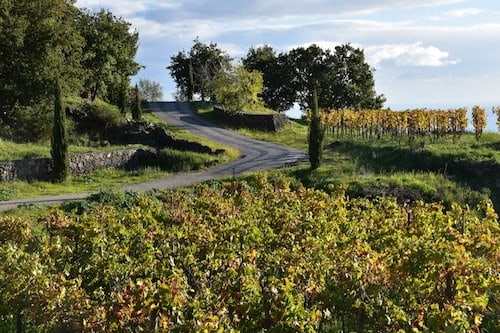
The island of Sicily is chock full of agriturismos, a type of farm-style B&Bs which offer homegrown culinary experiences and quaint, rural lodging. Staying at an agriturismo means you’ll dine on things locally grown on the property. In Sicily, that means meals are topped with pistachios and almonds. Expect vegetables from the garden, fresh Italian cheeses and olives. Orchards on the properties ensure you’ll savor the citrus tang of homegrown fruits like fresh lemons and oranges. You may even drink wine cultivated at your agriturismo too!
While planning your trip to Sicily, consider staying at one of these exceptional agriturismos for a delightful wine and culinary experience you won’t soon forget.
Tenuta di Fessina
Indulge in their award-winning wines, as well as the opportunity to learn about the intricacies of the winemaking process firsthand. Relish the estate’s organic fare, all while taking in the breathtaking views of Mount Etna.
Villa Zottopera
A charmingly rustic experience, with its ancient olive groves and traditional stone buildings. Guests can partake in olive oil tastings, explore the vineyards, or simply relax by the pool, enjoying the serene surroundings. Meals prepared with homegrown produce and local ingredients are the perfect accompaniment to the estate’s exceptional wines.
Azienda Agricola Mandranova
An oasis of tranquility set amidst a sprawling olive plantation. This family-run agriturismo offers cooking classes, allowing you to create your own Sicilian culinary masterpieces. Savor their premium olive oils and wines, while basking in the stunning views of the Mediterranean coast.
At Case di Latomie
Be enchanted by its historical charm, as it was once a site for ancient stone quarries. The agriturismo boasts citrus and olive groves, as well as fragrant herb gardens. Participate in a range of activities such as guided tours, wine tastings, or simply relaxing in the lush surroundings, savoring the flavors of Sicilian gastronomy.
Each of these agriturismos promises to be a captivating and unforgettable experience for the discerning Winetraveler.
Frequently Asked Questions about Reasons to Visit Sicily
Recent Articles about Sicily, Travel Guides & Tours
Ultimate Sicily Itinerary for Wine & Food Enthusiasts
Best Sicily Wine Tours: From Etna, to Catania and Taormina
You are reading “Top Reasons Why To Visit Sicily This Year” Back To Top
travel to Sicily Italy, why to visit Sicily: luxury wine hotels around the world
If you enjoyed this guide, make sure you register to become a Winetraveler for free! You’ll get access to all of our content and interact with other Winetravelers and for travel inspiration around the world. Be sure to follow along with us on Instagram as we continue to feature more exciting destinations.
